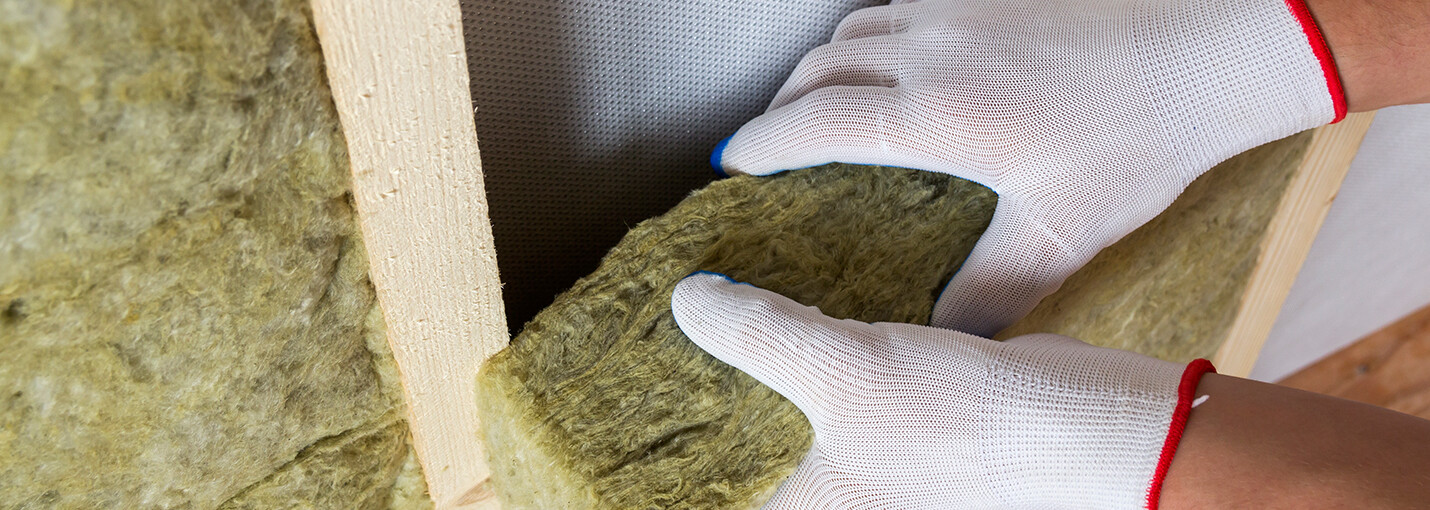Asbestos Abatement Work
Removing asbestos from your property is vital, but when doing asbestos abatement work, use a professional to minimize risks.
For many American homeowners, asbestos abatement is a matter of practical necessity. Asbestos-containing materials may pose little risk when they are kept inaccessible—trapped behind walls, or left underneath floors—but any disturbance could unsettle friable fibers, endangering the health and well-being of entire families.
!
If you believe that you were exposed to asbestos, even as a child, speak to a healthcare provider about tests and screening to help diagnose lung-scarring and screen for asbestos-related diseases.
However, asbestos abatement can be expensive, time-consuming work. Many homeowners try to save money by removing suspected asbestos-based products alone, without oversight or professional assistance.
While few states restrict the right of property owners to conduct routine maintenance, the long-term health effects of handling asbestos—even in small quantities—is not always worth the savings.
 |
| Nearly every building constructed before the mid-1980s contained asbestos products and building materials. |
 |
Asbestos in American Homes
Asbestos was once used to fabricate a wide range of construction materials and consumer products. Both in the United States and in countries around the world, asbestos had a reputation as a “miracle mineral.” It was versatile, inexpensive, and had near-unparalleled industrial potential.
However, asbestos’s reign—while long-lived—came to an abrupt end in the late 20th century.
Today, we know that asbestos, for its all its many applications, is anything but safe. It is, instead, a potent toxin and known human carcinogen, capable of causing medical conditions up to and including cancer.
“All forms of asbestos are carcinogenic to humans.” 1
The United States began restricting authorized uses of asbestos as in the early 1970s. The Environmental Protection Agency eventually tried to ban asbestos outright in 1989, but its decision was overturned, in part, by a circuit court.
While the E.P.A.’s asbestos ban failed, increased regulation crippled the asbestos industry and put an end to its longstanding lies. But asbestos companies—many driven to bankruptcy—were never ordered to recall their products, nor were they compelled to abate infected properties.
According to some reports, an estimated 30 million American homes still contain significant, and potentially life-threatening, concentrations of asbestos fiber.
Asbestos has no taste or smell.
You may not know you’re breathing it.

“The overall evidence suggests there is no safe level of asbestos exposure.”Source: National Cancer Institute (NIH)2 |
“Some asbestos fibers may bypass…your body’s natural defenses…and lodge deep within your lungs. Those fibers can remain in place for a very long time and may never be removed.”Source: American Lung Association |
The health risks of asbestos exposure can include:
| Mesothelioma: cancer of the mesothelium, the thin layer of tissue surrounding the body’s organs. This cancer is only known to be caused by asbestos exposure. | Lung cancer |
| Laryngeal cancer: cancer of the larynx (section of the throat called the voicebox) | Ovarian cancer |
| Stomach cancer | Colon cancer |
| Pharyngeal cancer | Asbestosis: a chronic lung disease associated with asbestos exposure |
| Chronic Obstructive Pulmonary Disease (COPD) | Atelectasis (collapsed lung) |
| Pleural effusion (collection of fluid around the lungs) | Pericardial effusion (collection of fluid around the heart) |
Asbestos and the Risk of Life-Altering Illness
Even today, decades after the E.P.A. enacted its first ban, asbestos remains a common and borderline unavoidable hazard. Everyone—young, old, rich, and poor—has either been exposed to asbestos, or will eventually be exposed to asbestos.
A type of naturally-occurring mineral, asbestos can be found across the United States, with significant deposits scattered throughout Montana, California, and the Appalachian Mountains.
“Generally, those who develop asbestos-related diseases show no signs of illness for a long time after exposure.”Source: National Cancer Institute (NIH)3 |
In many towns and cities, low levels of asbestos are present in the environment.
However, environmental asbestos exposure—while still dangerous—is rarely sufficient to induce illness. Most people who have been diagnosed with asbestos-related conditions are, instead, either those who worked in the asbestos industry or those who shared a living space with former asbestos workers.
Asbestos exposure, no matter its route, is never safe. It is associated with illnesses including, but not limited to, the following:
• Chronic obstructive pulmonary disorder (COPD)
• Cancer, including cancer of the lung, ovaries, and larynx
The latency of asbestos-related diseases
Symptoms of asbestos diseases can take 20-50 years to appear after exposure.
Asbestos-related illnesses are somewhat insidious, insofar as they have unusually long latency periods. A latency period, or latent period, refers to the time between exposure to an illness-causing agent and the emergence of noticeable symptoms.
Since asbestos-related conditions like asbestosis and mesothelioma have latency periods best measured in decades, many people—especially people who once worked with or around asbestos—never know that their body is harboring a potentially life-threatening illness until they are diagnosed and told that they have only years left to live.
Do You Qualify For Compensation?
Quickly and easily find out how you were exposed by searching W.A.R.D., the largest asbestos database on the planet.
FREE SEARCH >When Asbestos Abatement is Unavoidable
The risks of asbestos are manifold.
However, identifying asbestos-containing materials can be challenging, even for professionals with special training, certification, and laboratory-grade equipment. Many asbestos-based products are visibly indistinguishable from their non-asbestos-based counterparts, with differences observable only on the microscopic level.
“Generally, those who develop asbestos-related diseases show no signs of illness for a long time after exposure.”Source: National Cancer Institute (NIH)4 |

Homeowners have several options to confirm the presence of asbestos.
Options to determine the presence of asbestos include:
• Self-test kits for clothing and other products
If a test indicates that a product is likely asbestos-contaminated, property owners do not necessarily need to panic.
While asbestos can be incredibly dangerous, it poses little threat to human health if it is kept inaccessible. However, asbestos that has degraded, or become friable, may need to be removed if it is more likely than not to become aerosolized and spread into regularly occupied spaces.
You may need to consider asbestos abatement if:
• You have received a positive result from an asbestos test.
• You have friable asbestos-containing materials in publicly-accessible spaces or proximal to climate control ducts and vents.
• You are planning to sell your home and wish to minimize your legal liability for potential asbestos-related injuries.
“The overall evidence suggests there is no safe level of asbestos exposure.”Source: National Cancer Institute (NIH)5 |
The Asbestos Removal Process
Asbestos removal, or abatement, should only be undertaken by trained professionals. While every property is different, asbestos abatement companies typically employ either of the following strategies to mitigate asbestos-related hazards:
Encapsulation
Asbestos encapsulation is typically considered a cost-effective alternative to asbestos removal.
During the encapsulation process, the asbestos abatement company will cover any asbestos-containing products with a special sealant. This sealant traps asbestos fibers inside of an adhesive matrix, preventing the local spread of aerosolized asbestos.
Over $30 Billion is still available (No lawsuit. No fees unless you receive money. No risk.) Stake your claim.  |
Removal
Asbestos removal can be time-consuming, but it is sometimes a matter of practical necessity.
During a removal, asbestos abatement professionals usually take measures including, but not limited to, the following:
1. The part of the property containing asbestos may be sealed off from the rest of the home using plastic sheeting or another barrier.
2. The asbestos abatement company will place air filters inside of the asbestos-affected area. Ducts will be installed outside to extricate and separate aerosolized fiber.
3. Once abatement work begins, non-essential personnel will not be allowed to access the asbestos-contaminated space.
4. During abatement, the company may perform periodic air tests to ensure that environmental asbestos levels remain safe and stable.
5. After asbestos removal has finished, the asbestos-containing materials will be placed inside sealable bags or containers and transported to an authorized asbestos landfill or authorized asbestos recycling center.
“Some asbestos fibers may bypass…your body’s natural defenses…and lodge deep within your lungs. Those fibers can remain in place for a very long time and may never be removed.”Source: American Lung Association |
Staying Safe Around Asbestos
Homeowners should never handle asbestos-containing materials.
However, even if unadvisable, few—if any—states explicitly prohibit individuals from testing, collecting, and safely disposing of asbestos-contaminated products.
If you, or a loved one, elect to remove asbestos-containing materials from a property without professional assistance, you should protect your health by taking the following steps:
1. Isolating the suspected asbestos-containing materials.
2. Purchasing and wearing a tight-fitting respirator, gloves, and disposable work clothes.
3. Using water or a surfactant, spray the suspected asbestos to limit aerosolization.
4. Collect the asbestos-based product and place it into an airtight, sealable container.
5. Before leaving the workspace, remove your disposable clothes and immediately shower, taking care not to track any asbestos into the home.
Smokers exposed to asbestos are up to 50 times more likely to develop lung cancer than nonsmokers who aren’t exposed.3 |
Using a professional for asbestos removal
Asbestos should always be taken to an E.P.A.-authorized landfill or a certified recycling center.
While few states prohibit unassisted asbestos abatement, many penalize homeowners who dispose of asbestos-based products on private or public property. Burying or burning asbestos is against the law in many states; offenders could be fined thousands of dollars.
AsbestosClaims.Law
At AsbestosClaims.Law, our mission to secure compensation for asbestos victims is more than professional; it’s personal.
Our founder, Justinian C. Lane, understands the devastating impacts of asbestos firsthand.
Both his grandparents and father, all asbestos workers, passed away from asbestos-induced cancers without realizing their eligibility for asbestos lawsuits or other forms of compensation.
We aim to prevent such tragic oversights by informing and guiding victims and their families through their legal options.
If you or your loved ones have suffered as a result of asbestos exposure, you could be eligible for considerable compensation. These funds could provide for medical treatments, asbestos removal services, and safeguard your health.
In addition, asbestos trusts offer compensation without the need for a lawsuit, providing a quicker, simpler path to justice.
Reach out to us at [email protected] or (206) 455-9190 for assistance with your claim. We offer compassionate listening, clear explanations, and we don’t charge a dime unless we win your case.
Beyond legal claims, we also advise on veterans’ disability, social security, and employment protection like workers’ compensation, FELA, and The Jones Act for maritime workers.
There’s no risk or cost to connect with our experienced team about your rights. Our commitment to your well-being means no fees unless you receive compensation.
| For further queries or concerns about asbestos, explore our website and YouTube page, featuring infographics, videos, and answers to common questions on asbestos-related topics. |
We’ve also introduced W.A.R.D., the Worldwide Asbestos Research Database. It’s the most comprehensive resource for asbestos-related information.
W.A.R.D. assists in pinpointing potential exposure scenarios, asbestos-containing products, and can indicate the types and potential amounts of compensation you may be entitled to receive.
Don’t delay — get in touch with us today!
1 IARC Working Group on the Evaluation of Carcinogenic Risks to Humans. Arsenic, metals, fibres, and dusts. IARC Monographs on the Evaluation of Carcinogenic Risks to Humans. 2012 ;100(Pt C):11-465. PMID: 23189751.
2 National Cancer Institute (NIH), Asbestos Fact Sheet.
3 National Cancer Institute (NIH), Asbestos Fact Sheet.
4 National Cancer Institute (NIH), Asbestos Fact Sheet.
5 National Cancer Institute (NIH), Asbestos Fact Sheet.
6 Klebe, S., Leigh, J., Henderson, D.W. and Nurminen, M., 2020. Asbestos, smoking and lung cancer: an update. International journal of environmental research and public health, 17(1), p.258.